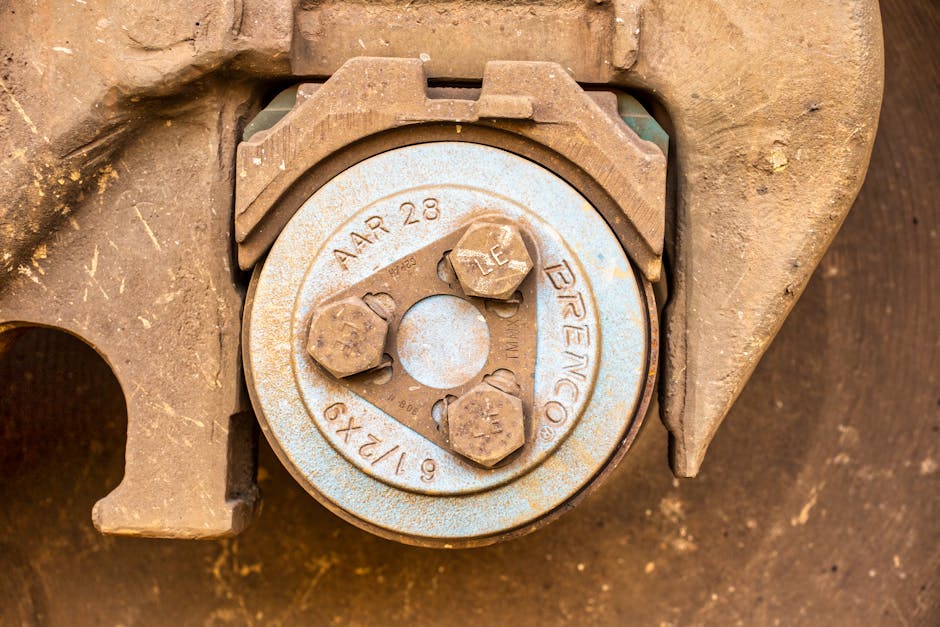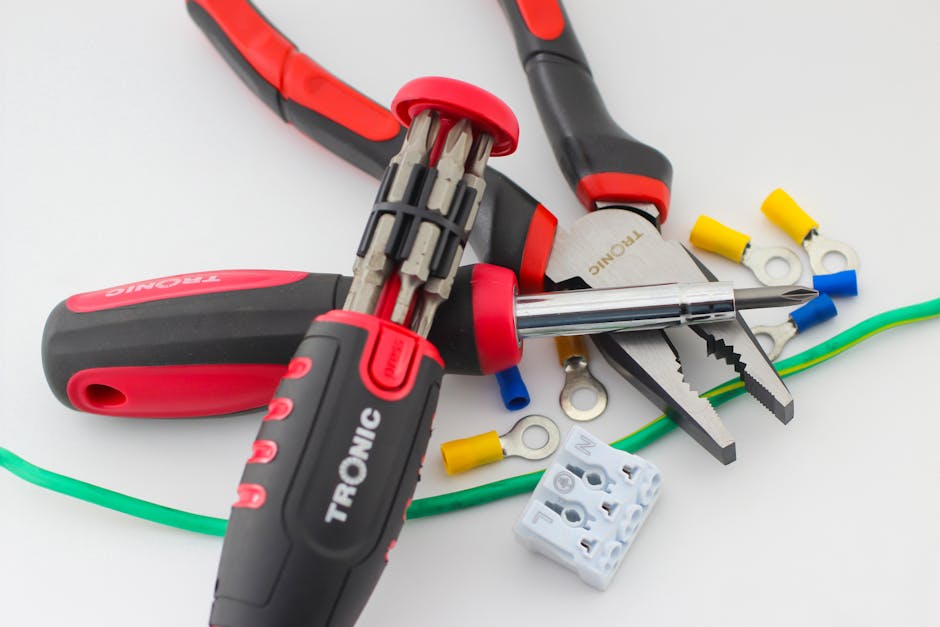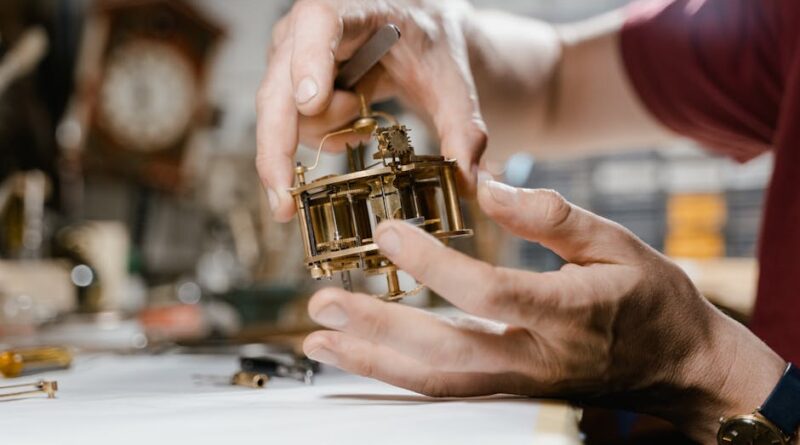Essential Tools for Mechanical Component Maintenance
Did you know that regular maintenance can extend the life of mechanical components by up to 30%? It’s true! When you take care of your tools and machines, they reward you with better performance and fewer breakdowns. But what are the essential tools you need for effective maintenance? Let’s dive in!
What Are the Basics of Mechanical Component Maintenance?

Mechanical component maintenance involves keeping machines and tools in good working order. This includes cleaning, lubricating, and inspecting parts. Think of it as a regular check-up for your car. Just like your vehicle needs oil changes and tire rotations, your machines require maintenance too.
Understanding the basics helps you identify what tools you need. Here are some core activities involved in maintenance:
- Cleaning components to remove dirt and debris.
- Lubricating moving parts to reduce friction.
- Inspecting for wear and damage that could lead to failure.
With this foundation, let’s look at the essential tools you should have.
Which Tools Are a Must-Have for Maintenance?

Now that we’ve covered the basics, lets explore the specific tools you’ll need. These tools help you perform maintenance tasks efficiently and safely. Heres a rundown of the essentials:
- Wrenches: These are crucial for tightening or loosening bolts and nuts.
- Screwdrivers: Flathead and Phillips screwdrivers are essential for various fasteners.
- Socket Set: A socket set allows you to work with different sizes of nuts and bolts.
- Pliers: Use pliers for gripping, bending, or cutting wires and small components.
- Lubricants: Oils and greases are necessary to keep moving parts running smoothly.
- Cleaning Supplies: Brushes, rags, and solvents help remove dirt and grime.
- Calipers: These are used for precise measurements of parts.
Each tool plays a specific role in maintenance. Lets break down a few of these tools further.
How Do Wrenches and Screwdrivers Help?

Wrenches and screwdrivers are the bread and butter of any maintenance toolkit. Wrenches come in different types, such as adjustable and torque wrenches. They help you apply the right amount of force to nuts and bolts.
For instance, if you’re tightening a bolt on a machine, using the right wrench prevents damage. A torque wrench ensures you don’t over-tighten and cause stress on the part. This is similar to how a chef uses a specific knife to chop vegetables; the right tool makes the job easier and safer.
Screwdrivers, on the other hand, come in handy for various tasks. If you need to open up a machine for inspection, a screwdriver is often your first tool. Flathead screwdrivers work on simple screws, while Phillips screwdrivers fit better in cross-shaped screws. Think of them as essential utensils in a toolbox kitchen!
Why Are Lubricants Important for Maintenance?

Lubricants are often overlooked but are essential for keeping machines running smoothly. They reduce friction between moving parts, which can wear down components over time. Imagine trying to slide a heavy box across the floor without any help; it’s much harder than if you had a smooth surface.
Different lubricants serve unique purposes:
- Oil: Generally used for engines and motors.
- Grease: Thicker and ideal for parts that don’t move as often.
- Penetrating Oil: Useful for loosening rusted or stuck parts.
Using the right lubricant can save you from costly repairs. it’s like giving your car a regular oil change. Maintaining your machines with the right lubricant keeps them happy and running longer.
How Do Cleaning Supplies Fit into Maintenance?
Cleaning is just as important as lubrication. Dust, dirt, and grime can build up and cause parts to wear out faster. Regular cleaning keeps your machines in top shape. Think about how you feel after a good spring cleaning; everything looks better and works more efficiently!
Here are some cleaning supplies you might want to include:
- Brushes: Great for removing dirt from hard-to-reach places.
- Rags: Use them for wiping down surfaces and parts.
- Solvents: Helpful in breaking down tough grime or grease.
Incorporating cleaning into your maintenance routine can prevent major breakdowns. Just like keeping a kitchen clean prevents fire hazards, maintaining cleanliness in machines can avoid accidents.
Why Is Inspection Crucial in Maintenance?
Inspection is the detective work of maintenance. it’s about finding potential problems before they become big issues. Regular checks let you see wear and tear on parts, which can save time and money.
What should you inspect? Here are some key areas:
- Look for cracks or breaks in components.
- Check for leaks in hydraulic systems.
- Examine belts and hoses for signs of wear.
Just like a regular health check-up can catch illnesses early, consistent inspections help spot mechanical issues. This proactive approach keeps your equipment running smoothly.
How Can You Organize Your Tools for Easy Access?
Having all the right tools is great, but organization is key. A messy workspace can slow you down. it’s like searching for your favorite shirt in a cluttered closet; it takes too much time!
Here are some tips for organizing your maintenance tools:
- Toolbox: Invest in a good toolbox to keep everything in one place.
- Labels: Label your drawers or sections for easy identification.
- Regular Clean-outs: Periodically go through your tools and remove what you don’t use.
Staying organized not only saves time but also ensures you have what you need when you need it. Youll be able to focus on the task at hand instead of digging through piles of tools.
What Are Some Common Questions About Maintenance Tools?
Lets answer some frequently asked questions related to maintenance tools and practices.
How often should I perform maintenance?
It depends on the machine and it’s usage. Generally, it’s best to inspect and maintain machines regularlymonthly or quarterly works for most tools.
Can I use household items for cleaning and maintenance?
Absolutely! Items like vinegar, baking soda, and old toothbrushes can be great for cleaning, just ensure they’re safe for your specific materials.
What if I’m not comfortable doing maintenance myself?
If you’re unsure, it’s always best to consult a professional. Proper maintenance is crucial, and sometimes hiring an expert can save you from costly mistakes.
Closing Thoughts: Take Action Today!
Maintenance is an investment in your tools and machines. By having the right tools and following a regular maintenance routine, you can save time and money in the long run. Start smallpick one tool or area to focus on today.
Remember, regular maintenance not only extends the life of your equipment, but it also boosts safety and efficiency. Don’t wait until something breaks to take action. Make maintenance a part of your routine!
For more information on tool maintenance, check out Maintenance World for expert tips and resources.
With these tools and tips, you are now equipped to maintain your mechanical components effectively. Happy maintaining!
